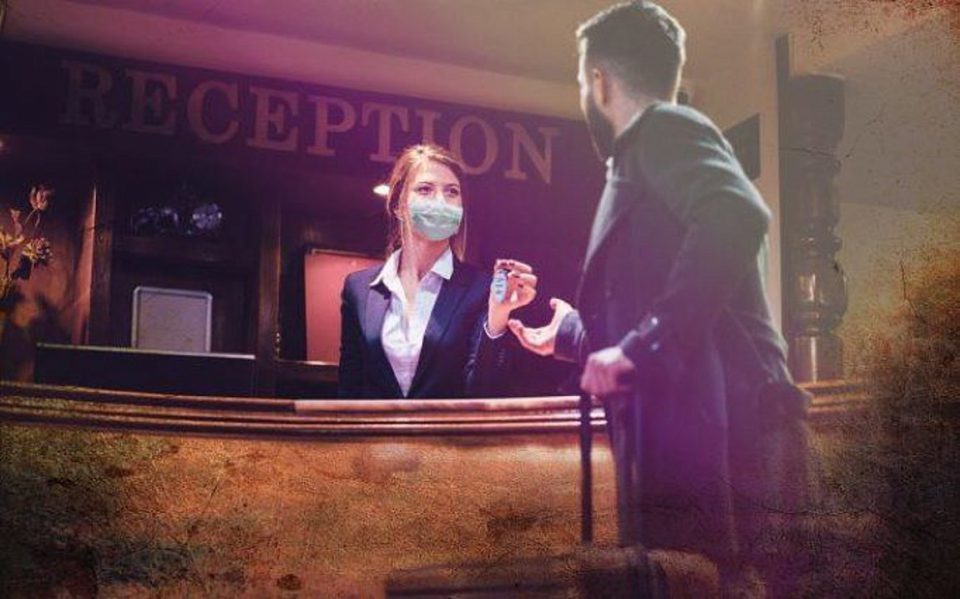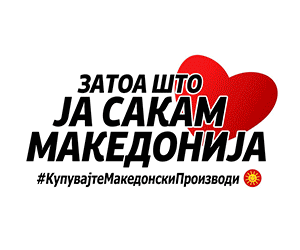Guests wearing masks, receptionists and waiters wearing visors. Rooms without decorative cushions, ribbons and covers. Empty floors and hallways, no toys, no magazines, no printed informative materials. Walkway limit signs on the floors. This is the picture painted in national hotels that will reopen their doors Monday, June 22, in accordance with the coronavirus-related protocol.
Hoteliers say they’re ready, but there are no guests. Reservations are few and far between, only a couple of July and August. They expect more guests in September/October. They say that if the procedures for entering and exiting the country aren’t eased up as soon as possible, and if the air and land traffic don’t open up soon, their capacities will shut down.
Hotel procedures
According to the protocol, hoteliers are obligated to provide disinfectant shoe barriers at the front door, as well as a hand disinfectant counter. Guests and employees must wear a protective face mask, the counters must have a plastic/glass barrier with an opening at the bottom in order to hand off keys and documents, and the hygiene in public spaces and rooms must be maintained daily with a disinfectant that works on viruses, as well as regular airing of the rooms.
It’s recommended to pay via credit card as a degree of protection to lessen the risk of transmission. Also, there should be a legible welcome sign at the entrance detailing the steps and recommendations that should be taken during the guests’ stay, such as wearing face masks and disinfecting the hands, and there should be a 1.5-2 m distance between guests at the reception desk in case the counter isn’t wide enough. The plastic barrier at the counter can be replaced if the receptionist wears a protective visor.
The guests should approach the reception one by one, or in a number that doesn’t allow for grouping, but allows for enough distance. For those waiting, there should be floor signs or pillars to limit the walkway. Service givers should remove objects that are touched by multiple guests, such as toys and magazines. The guest should receive a flyer with protection advice and protocol guidelines for their stay, defined by an internal hotel team, alongside with their room key. The rooms and reception desk are to have hand disinfectant gel provided, and textile decorations, such as cushions, ribbons and decorative covers on furniture and the beds are to be removed, the protocol states.
Single or double rooms with adjustments can be offered, and multi-bed facilities allow situating guests who come from a single household.
Staff must accentuate cleaning and disinfecting objects touched by many people – stairwell railings, light switches, handles, doorknobs and elevator buttons. In case a guest stays for multiple days, daily cleaning is allowed only if the guest explicitly agrees to it. While cleaning multiple lodging capacities, special care must be taken to avoid transmitting the virus from one capacity to another through infected clothes or protective gear. It’s recommended to adapt cleaning procedures to avoid such transmissions, such as using single-use protective clothes, or changing protective clothes each time, the Protocol states.
Restaurant procedures
Buffets are not allowed, nor is it allowed to serve guests at the bar and standing tables. Servers in restaurants must wear protective masks and maintain hand hygiene. Tables and chairs must be disinfected before and after each meal.
Tables must be covered with paper or nylon single-use sheets, or if standards sheets are used, they must be washed after each guest that’s been served. Tables should not be previously set if the object has the conditions to set disinfectant gel at each table, and if not, guests can use the disinfectant gel set at the restaurant entrance, according to the WHO’s recommendations.
The cruet and eating utensils, which must be disinfected beforehand, are set after the guests are seated. The utensils must be wrapped in a nylon wrapping or in a napkin. The waiter must maintain maximum personal hygiene, wearing a face mask while serving and maintaining distance. Given that one cannot serve food and drink from 2 meters away, the waiter should decide what the appropriate distance they can maintain while serving is. After serving, the waiter stands at an appropriate distance and waits to be called by the guests. All apparatus for pouring water, tea, coffee or juice must be removed, and drinks are to be served according to the guests’ wishes once the table is served, the protocol states.
Using common open containers for condiments, sauces, salt, sugar, oils, and teas that are shared between more than one table is also prohibited.
Once the guests have finished with their meals, the used utensils are removed from the tables and washed and disinfected in the unclean part of the kitchen, in accordance with the usual procedure according to HACCP standards, which stipulate that the bar and kitchen must have a clean area to operate and serve food and drink, and a part for putting away used utensils to be washed and disinfected. Distance between chairs at nearby tables should be 1.5-2 meters. One four-chair table can seat a maximum of two people, the Protocol says.
Strengthened internal controls are necessary, ensuring that the employees are maintaining personal hygiene and washing their hands often in every stage of prepping, receiving and serving food, as well as strengthened sanitary measures such as wiping down the tables with virus-killing disinfectant once the guests leave the table, as well as mechanical cleaning and disinfection at the end of shifts.
Toilets must be regularly kept clean by keeping records of cleaning and use of appropriate disinfectants. Hand driers are prohibited. Single-use paper towels must be used.
Source: MIA




Comments are closed for this post.